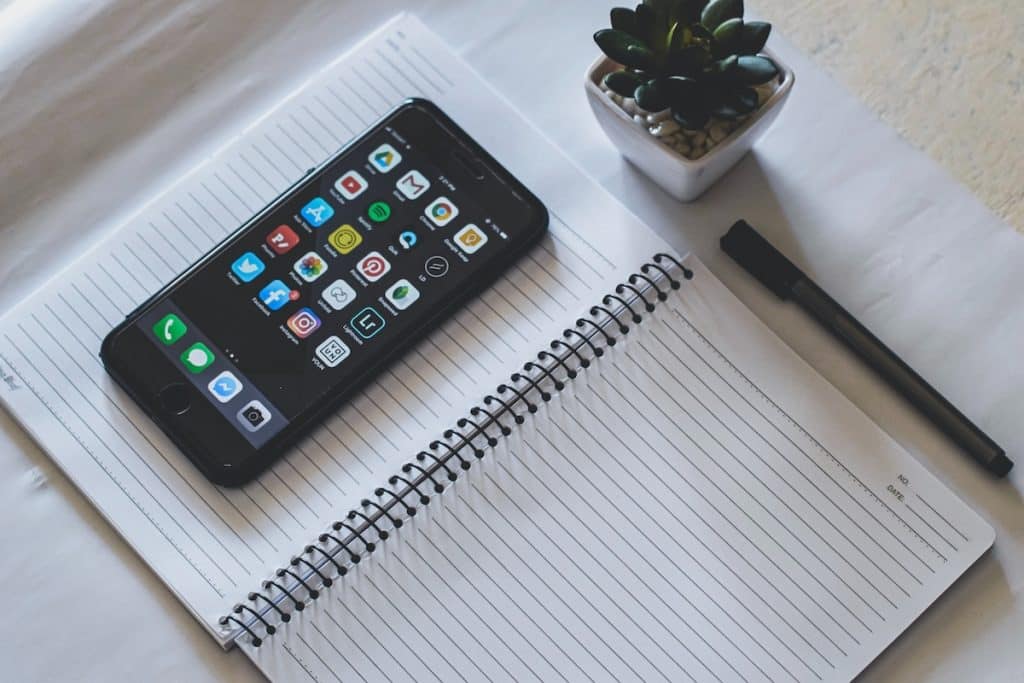Table of Contents
With the increasing adoption of technology in everyday society, it’s now impossible to go without a smartphone. Just on our sunny island alone, smartphone penetration rate in Singapore has reached about 93.7%; with Singaporeans mostly using social and communication apps, such as Instagram, TikTok, and Facebook. A large portion of our day is spent scrolling – and as a result, our phones have a great potential to impact our overall wellbeing, and specifically our mental health.
Recognising the ubiquity of smartphones in today’s age, tech companies have started incorporating more elements into their products, to help protect or improve our mental wellbeing. This shift towards mindfulness in our technology is termed ‘Mindful Tech’; and it seems to re-shape our relationship with technology, such as our phones, to boost our wellbeing instead. In this article, we explore what mindful tech is and whether these products can indeed help to support our mental health.
What is Mindful Tech?
There are two ways to understand the term ‘Mindful Tech’;
- How we can learn to use technology mindfully: in this, the focus is on our individual behaviours and habits around our interaction with technology
- How technology can incorporate elements that support mindfulness and our mental health: in this, the focus is on the technological products and the features they have that help us to focus on our mental health
In both definitions, our mental health is of priority – particularly given the wealth of research that shows how an overuse of social media can impact our wellbeing negatively.
The move towards mindful tech recognises that digital technologies may have a negative impact on us; yet reframes this issue as a way to highlight the potential of technology in helping to improve our health, so long as we’re able to interact in a mindful and responsible way.
Examples or elements of mindful technology include:
- The increasing prevalence of meditation apps, such as Headspace and Calm, which contain useful guides on how to meditate and practice mindfulness
- In-built ‘Screen time trackers’ that are part of our phone’s default operating system, which allows us to be aware of the amount of time we’re spending on our phones, along with a breakdown of the specific apps that are taking up the most of our attention
- Digital journaling apps, such as Apple’s Journal app, which encourage individuals to take time to reflect on their day and jot down their thoughts, cultivating the healthy habit of self-awareness
With mindful tech, we are supported to take action on our mental health. These additional avenues can be useful in helping us develop good mental wellbeing habits as well as establishing a healthier relationship with technology.
However, is Mindful Tech everything?
The convenience of having Mindful Tech elements baked into the everyday apps that we use makes it easy to start cultivating good mental health habits. For example: having a meditation app send us a notification to remind us that we haven’t done a daily meditation is an easy way to prompt us to make time for our mental health, especially amidst a busy day.
However, an over-reliance on technology and the capitalistic companies who develop these technologies is never the answer. Despite the benefits and convenience of mindful tech, we shouldn’t be too quick to embrace these technologies so readily. These are a few reasons why it’s important that we take a balanced view of apps that purport to support our mental health.
Growing Dependence on Technology
As useful as mindful tech applications can be, they shouldn’t be the only way that we’re cultivating better mental health habits for ourselves. By relying too much on mindful tech, we may paradoxically increase our dependence on technology and our phones instead.
At their core, most mindful tech products are created with the aim of generating revenue for their parent company; and this usually comes in the form of user engagement and time spent on the app. As such, we should still be mindful about the time we’re spending on these tech products. We should also be developing other offline ways of coping with our stress and emotions as well.
Concerns around Data Privacy
There’s no shame in admitting that you skip over the long Terms & Conditions that come with downloading a new app (we do it too!). Yet, buried within the legalese are usually terms about the collection of personal and sensitive data.
Although it can be argued that such data is collected just for the company’s purposes in order to improve their own app and develop better products, we should be cautious of the possibilities of privacy breaches or misuse of such sensitive data. Giving too much information to these mindful tech companies – especially data around our mental health and wellbeing – may place us in a perilous and compromising position, should the company fail to be diligent about data privacy.
True Effectiveness of Interventions
Lastly, research is still mixed about the effectiveness of mindful tech in promoting mental wellness. Although there are a couple of studies that demonstrate the positive impact of mindfulness apps, they’re rather limited in scope.
As such, it’s hard to conclude if digital interventions are definitely better than the human touch, that is: speaking to a counsellor.
How else can we use Technology mindfully?
We should look at the other lens that we can view the term ‘Mindful Tech’ through: that is, our own behaviours. Instead of solely depending on mental health apps or mindful elements that are built into our apps, we should also take it on ourselves to adopt better habits around the use of technology.
Cultivate Self-Awareness
The first step towards having a healthier relationship with our devices is understanding how much time we’re spending on them and when we may be looking at our phones. You can start by taking note of when you reach for your phone, and how long you end up spending scrolling as a result.
By bringing this behaviour to your attention, you become more mindful of the situations when you may be over-relying on your phone. Inappropriate moments could be during family dinners or meet-ups with your friends; as these are times we should be focusing on the present, and enjoying the company that we’re with. Through this, you begin to become more mindful of your phone usage; and with this, you can start to draw better boundaries for when to use your phone or put it aside.
Doing a Digital Detox
Having our phones on us constantly may make it difficult to ‘switch off’ from the flood of notifications and messages that we receive daily. This onslaught of texts can create mental clutter in our minds, and create unnecessary (subliminal) stress for us.
One way to force yourself to disconnect would be to do a digital detox. It may feel a little extreme to go without your phone for an entire day, but you can start small! Perhaps leave your phone at home for an afternoon during the weekend, and enjoy a distraction-free walk around your neighbourhood. Doing this regularly can be a form of mindfulness practice on its own, as you’re forced to focus on what you’re doing, rather than lean on your phone as a crutch.
Ultimately, it’s impossible to toss aside all forms of technology, particularly as the world goes more digital. While we can create digital products that may support our mental health, we need to still cast a critical eye on mindful tech and their effectiveness. Instead of an over-dependence on tech, we can instead blend real world habits and interventions with digital technology for a more holistic way to support our mental health. If you’d like to speak to a counsellor for more support, get in touch with us today. Our team of mental health experts and therapists are here for you.
References:
- https://www.statista.com/statistics/625441/smartphone-user-penetration-in-singapore/
- https://www.tech.gov.sg/media/technews/international-self-care-day
- https://mindful.technology/what-is-mindful-technology/
- https://journal.contemplativeinquiry.org/index.php/joci/article/view/111
- https://www.everydayhealth.com/wellness/5-tips-for-kick-starting-a-mindful-tech-self-care-habit/
- https://applover.com/blog/mental-wellness-apps-a-new-horizon-in-healthtech/
- https://medium.com/@jayce11/mindful-tech-101-what-it-is-why-it-matters-and-how-to-use-it-for-digital-well-being-846dfd1622bb
- https://haptivate.co.uk/blog/best-wellbeing-apps/
- https://www.vox.com/technology/2023/12/21/24010164/apple-journal-app-ai

An experienced health & wellness writer, I am a story-teller at heart. For me, writing is a way of weaving together the little details that make our existence meaningful and significant into a beautiful, larger story.




